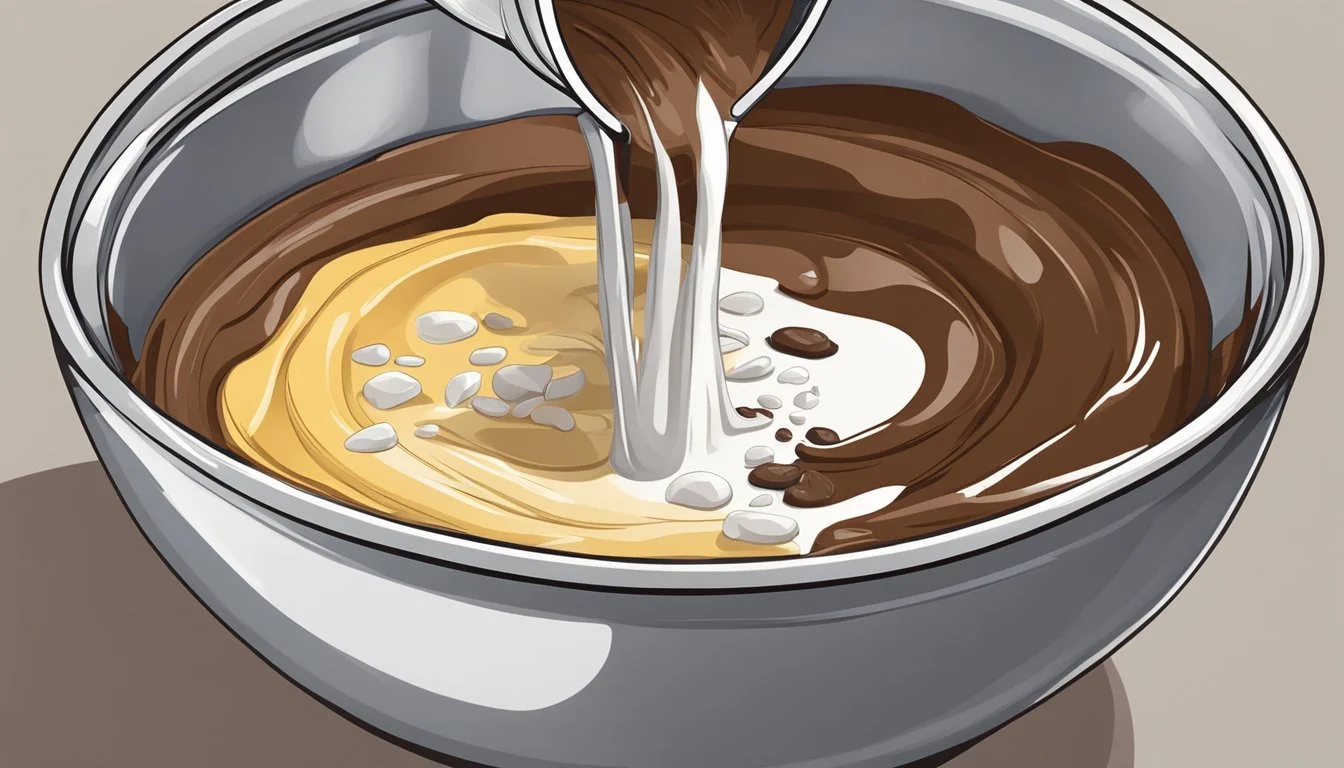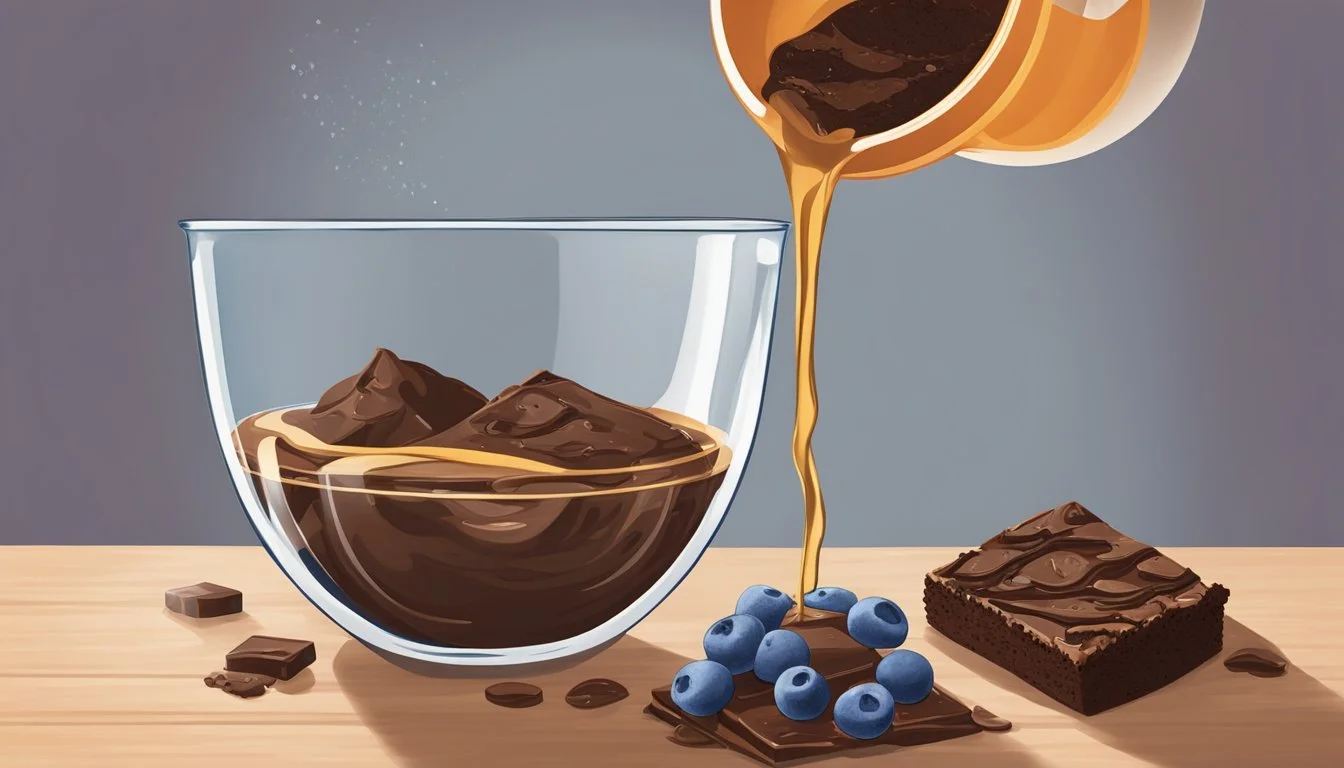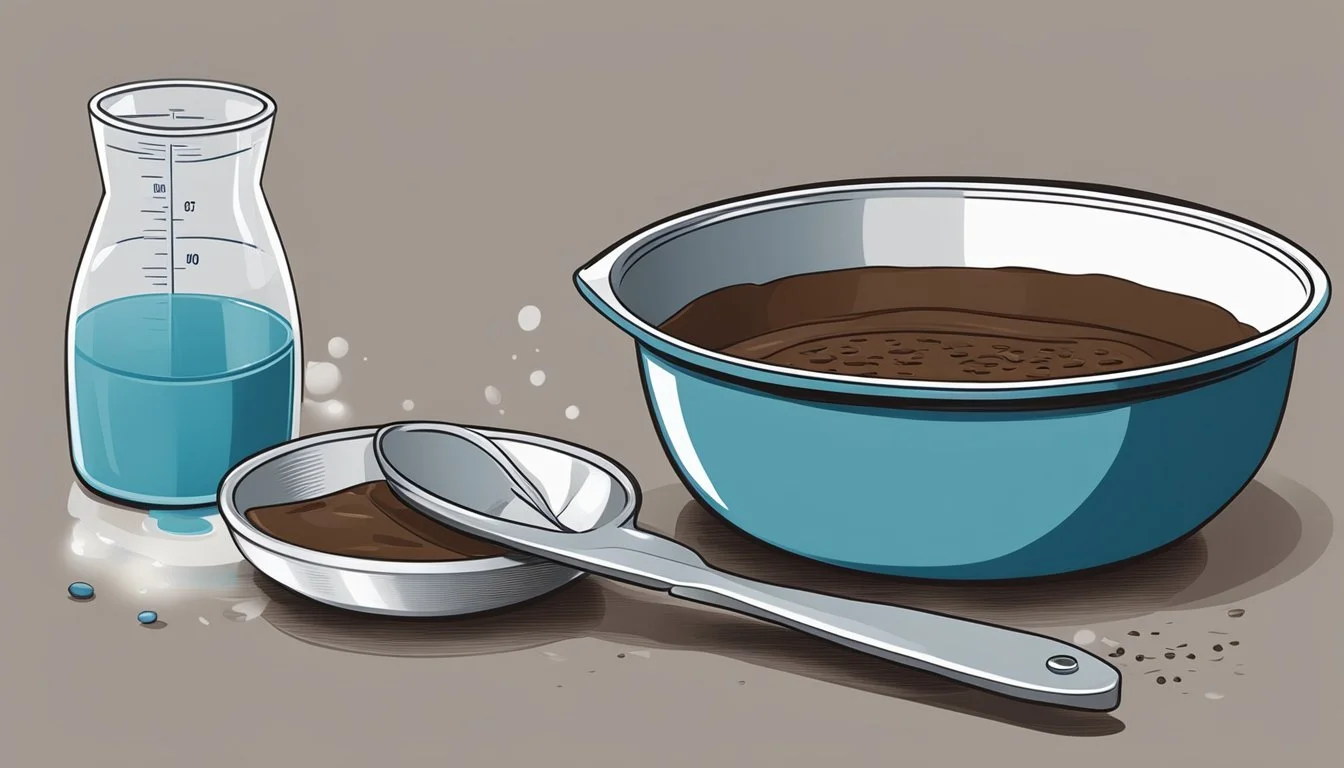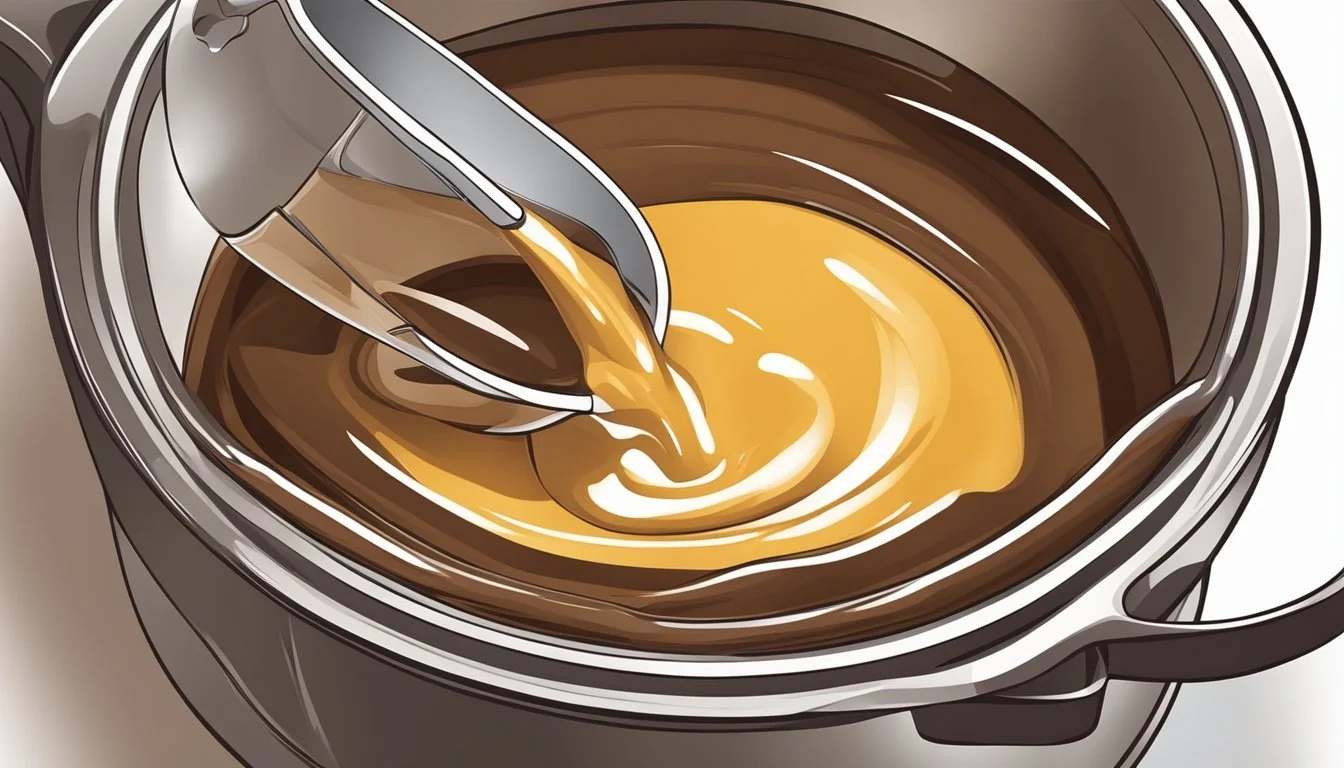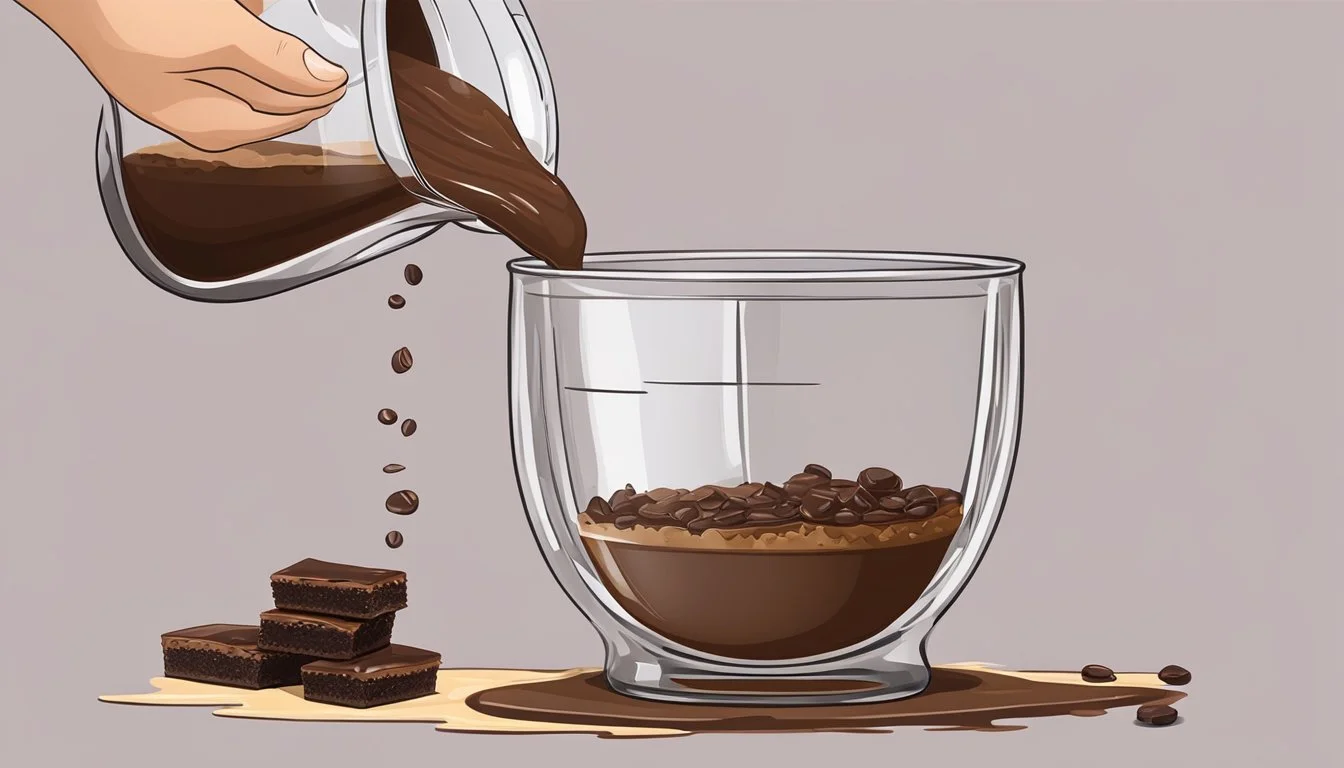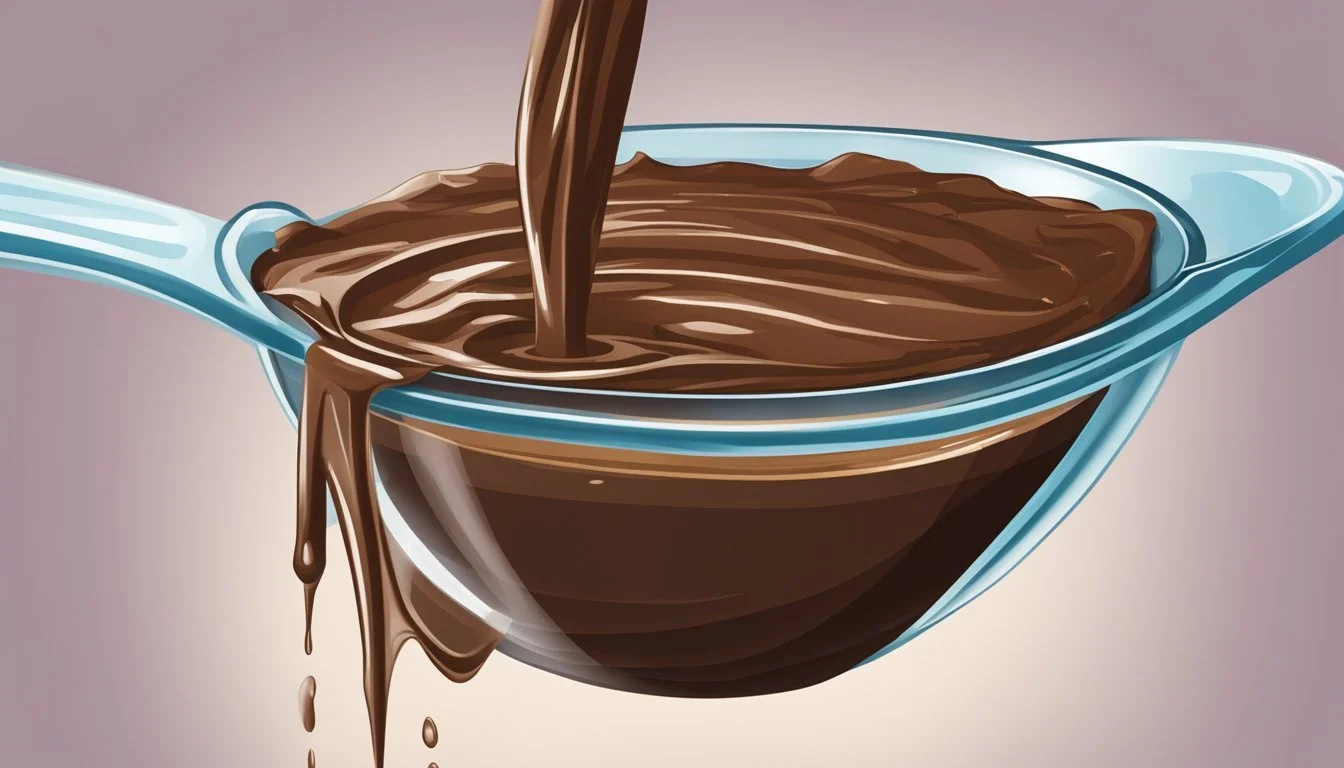How to Measure the Right Amount of Liquid for a Brownie Filling
Precise Baking Techniques
Measuring the correct amount of liquid for a brownie filling is a crucial step in ensuring the perfect texture and consistency of the final product. A brownie's signature moist, fudgy interior relies on a delicate balance of ingredients. Liquid, often in the form of oils or dairy, contributes to the richness and density of the filling. Precision in measuring these liquids is necessary because even a small deviation can lead to a filling that is too runny or too dense, which adversely affects the brownies' structure and taste.
The approach to measuring liquids varies depending on the recipe. Traditional recipes may call for liquid measurements in volume, such as cups or milliliters, while professional bakers often prefer the accuracy of weight measurements, using ounces or grams. Scales are highly recommended for their precision, which can make a noticeable difference in the outcome of a recipe. Using a scale with a tare function allows for direct measurement of liquids in the mixing bowl, simplifying the process and minimizing cleanup.
When preparing the filling, it's important to consider the interplay between the liquid components and other ingredients, such as chocolate, butter, and eggs. The properties of these ingredients, particularly how they react when mixed and heated, can affect the amount of liquid required. For instance, the water content in butter can vary, altering the moisture level in the brownie batter. Hence, understanding and carefully measuring liquids is key to achieving that coveted chewy, crackly top with a rich, fudgy center in each batch of brownies.
Understanding Brownie Components
The perfect brownie strikes a balance between its components, each measured and chosen with care to create the desired texture and flavor.
Role of Flour and Its Measurements
Flour provides the structure to brownies. All-purpose flour is commonly used for its reliability and accessibility. The measurement of flour is critical; too much can lead to a dry and cake-like texture, while too little may result in a brownie that doesn't set. A standard ratio might be 1 cup of flour to 1/2 cup of fat to retain moisture without losing structure.
Importance of Sugar Types and Ratios
Sugar adds sweetness and affects moisture. Brown sugar introduces a moistness and a rich, caramel-like flavor due to its molasses content. In contrast, white sugar contributes to a crisper crust. Ratios vary depending on the desired outcome, with a typical recipe calling for about 1 to 2 cups of sugar.
Choosing the Right Chocolate
Chocolate is pivotal in dictating flavor. Options include melted chocolate, chocolate chips, rich chocolate chunks, and cocoa powder. Bittersweet and dark chocolate offer a less sweet, more intense flavor. The quantity of chocolate required can range from 1/2 cup to 1 1/2 cups, depending on the recipe and desired richness.
The Function of Fat
Fat, often in the form of unsalted butter or oils, adds richness and a tender texture. Melted butter infuses brownies with a delectable flavor and softness. The ratio of fat plays a critical role and can range from 1/2 cup to 1 cup of butter depending on the recipe.
Eggs As a Binder
Large eggs serve as a binder, securing the mixture together. Eggs also contribute to the leavening and can affect the brownie's chewiness. A common measure is two large eggs per batch of brownies to create a balanced texture.
Preparation Techniques
When crafting the perfect brownie filling, precise measurement of liquids is crucial. Mastery over the batter's consistency and understanding the role temperature plays can significantly impact the brownies' texture.
Steps for Mixing Brownie Batter
Properly mixing brownie batter lays the groundwork for an impeccable texture. A standard recipe might instruct bakers to:
Combine melted butter and sugar to help dissolve the sugar crystals.
Whisk in eggs and vanilla extract for aeration.
Fold in the dry ingredients using a spatula until just combined.
Gently stir in any mix-ins such as chocolate chunks or nuts.
Note: Ingredients should preferably be at room temperature to ensure a smooth batter.
Temperature and Texture
The temperature of both ingredients and the oven can dramatically alter a brownie's chewiness. Heated sugar and fat create a shinier, crackly top and a fudgy texture. Measures for temperature control include:
Preheat the oven to the temperature specified in the recipe (commonly between 160 to 180 °C).
Use an oven thermometer to verify accuracy.
Avoiding Overmixing
Overmixing the batter incorporates too much air, which can lead to cakey brownies, so here's how to avoid common mistakes:
Mix until just combined; overworked batter develops a tougher texture.
Use a spatula for a gentle approach, especially after adding flour.
Stop as soon as mix-ins are evenly distributed, ensuring chewiness prevails.
Baking Process
When preparing a brownie filling, precise measurement of liquid ingredients and attention to each step of the baking process ensures a perfect texture and consistency.
Correct Oven Settings
The oven temperature is critical for proper baking. A reliable oven thermometer is recommended to ensure accuracy, despite the oven's internal settings. Brownies typically bake well between 350°F (175°C) and 375°F (190°C). Preheating the oven is essential to provide consistent heat from the start of baking.
Pan Choices and Preparation
One should select the right baking pan for even baking. Dark metal pans will absorb more heat, potentially decreasing bake times. Conversely, shiny metal or glass pans reflect heat, likely resulting in longer baking time. Lining the pan with parchment paper, leaving an overhang on the sides, not only aids in easy removal but also helps with even heat distribution.
Determining Baking Times
The baking time can vary based on the recipe and the chosen pan material and size. A general rule is to start checking brownies 5-10 minutes before the recipe's stated time. The toothpick test is a reliable method: insert a toothpick into the center and if it comes out with a few moist crumbs, the brownies are done. Overbaking should be avoided as it can lead to dryness; brownies will continue to bake slightly from residual heat after being removed from the oven.
Assessing Brownie Doneness
Assessing the doneness of brownies ensures that they meet the desired texture, whether fudgy, chewy, or cakey. A variety of factors and testing methods can provide clear indicators.
The Toothpick Test: The most common method is the toothpick test. Insert a toothpick into the center of the brownies. If it comes out with a few moist crumbs, the brownies are likely done. The presence of wet batter indicates underbaking, while a clean toothpick suggests overbaking.
Fudgy Brownies: Expect some moist crumbs, but not wet batter.
Chewy and Cakey Brownies: The toothpick should have fewer crumbs compared to fudgy brownies.
Visual Cues: Observing the brownie surface and edges provides additional clues:
Crinkly Top: A shiny, crinkly top often signifies that the brownies are baked sufficiently.
Edge Pull-Away: Well-done brownies will show edges slightly pulling away from the pan’s sides.
Common Mistakes to Avoid:
Overbaking: This results in dry, hard brownies. It's better to err on the side of slight underbaking, as brownies continue to cook from residual heat post-removal from the oven.
Underbaking: An underbaked brownie is excessively gooey or even raw in the center, presenting a risk of consuming uncooked eggs and flour.
By applying these methods with precision, one can achieve brownies with their desired characteristic whether it's the dense and moist texture of fudgy brownies, the balanced texture of chewy brownies, or the lighter texture of cakey brownies.
Cooling and Cutting
When preparing chocolate brownies, mastering the cooling and cutting process ensures the perfect texture and presentation. Proper techniques in these final stages can make or break the outcome.
Proper Cooling Techniques
Following the specific chocolate brownie recipe, one must allow the brownies to cool completely to stabilize their structure. The cooling process should be executed in two phases:
Initial Cooling: The brownies should be left in the pan on a wire rack for at least 20 minutes. This allows heat to dissipate evenly and prevents the brownies from continuing to cook from residual heat.
Secondary Cooling: After the initial phase, they should be removed from the pan and allowed to cool further on the rack, for at least an hour, ensuring they reach room temperature.
Once cooled, transfer the brownies to an airtight container for storage if they are not to be cut immediately. This preserves their moisture and extends freshness.
Achieving Clean Cuts
A sharp knife is pivotal for clean cuts that do not tear or smudge the brownies:
Prepare the Knife: A sharp chef's knife or a serrated bread knife should be used to slice brownies. It's best to heat the blade with hot water or dip in hot water between slices for even cleaner cuts.
Cutting Technique: After the full cooling process, one should gently score the surface to mark the desired size and then cut with a single downward motion, cleaning the knife after each cut.
By adhering to these techniques, the brownies maintain a pristine edge and present beautifully.
Storing and Serving
When storing and preparing to serve brownies, one must ensure that the brownies remain moist and delectable. Proper storage extends their freshness, while appropriate serving maintains their intended texture and taste.
Best Practices for Brownie Storage
Storing brownies correctly is critical in preserving their flavor and moistness. An airtight container is the optimal choice for keeping homemade or classic chocolate brownies at room temperature for 3-4 days. Here's how one can store them effectively:
Short-Term Storage:
Ensure brownies are fully cooled before storage.
Place in an airtight container or a cake container.
Alternatively, wrap in plastic wrap and then place them inside a storage bag.
Long-Term Storage:
For extending freshness beyond a few days, wrap brownies individually in plastic wrap.
Place wrapped brownies in a freezer bag and store them in the freezer.
Brownies can remain in the freezer for up to three months for optimal taste.
Serving Suggestions
To serve the perfect brownies, they should be brought back to their best possible state. The following suggestions ensure your brownies taste as if they've just come out of the oven:
From Room Temperature:
Remove from storage and let them reach room temperature if chilled.
Cut into uniform squares with a sharp knife for an elegant presentation.
Reheating:
For a chocolate brownie recipe that feels freshly baked, reheat brownies at 350°F (175°C).
Heat them on a baking tray for 10 minutes if fresh, and up to 20 minutes if frozen.
For a quick method, microwave on full power in bursts of 20 seconds, checking in between until warmed through.
By adhering to these storage and serving guidelines, one ensures that each batch of homemade brownies from any chocolate brownies recipe remains as inviting and indulgent as when they were first prepared.
Troubleshooting Common Mistakes
When measuring liquids for a brownie filling, precision is critical. Common mistakes can lead to an unsuccessful batch. Here are ways to address and correct them:
Overbake or Underbake: A kitchen scale can ensure the correct amount of liquid is used to avoid overbaking, which dries out the filling, or underbaking, which leaves it too runny. Always measure by weight for accuracy.
Kitchen Scale Usage:
Place bowl on scale before adding ingredients.
Tare (zero out) the scale after each ingredient.
Slowly pour liquid until you reach the desired weight.
Measuring Cups: It's easy to use the wrong type of measuring cup. Utilize liquid measuring cups for ingredients such as vanilla extract or oils, reading at eye level for accuracy. Solid measuring cups are best for powders like unsweetened cocoa powder or powdered sugar.
Correct Measuring Cup Technique:
For liquids, fill to the meniscus and check at eye level.
For dry ingredients like cocoa powder, spoon into the cup and level off without compacting.
A clear bowl helps to see if all ingredients, like chopped nuts or dutch-processed cocoa, are fully incorporated without over-mixing.
Use a bowl with enough space to fold ingredients gently.
Baking Tips:
Preheat oven properly to recommended temperature.
Follow recipe ratios; alterations could lead to baking time and texture issues.
Consistency in ingredient preparation ensures even distribution; e.g., nuts should be uniformly chopped.
Remember, diligent measurement and attentive technique go a long way in achieving the perfect brownie filling.
Perfecting Your Brownie Filling
For ideal brownie fillings, a precise measurement of liquids is crucial to ensuring that the brownies are fudgy, moist, and have the right texture. The filling, often the heart of the brownie, contributes significantly to its flavor and overall mouthfeel. Brownie enthusiasts know that getting this part right can mean the difference between a good brownie and a great one.
Essential Ingredients for Filling
Liquid (such as water, milk, or coffee): Enhances moisture
Fat (like oil or melted butter): Promotes a chewy texture
Sugar: Provides sweetness and a soft structure
Eggs: Act as a binder and contribute to the richness
Important Tips for Measurement:
Use a kitchen scale for precision. Liquid ingredients should be measured in grams or milliliters for consistency.
Ingredients at room temperature blend more easily, helping to avoid overmixing.
Emphasis on Texture:
For a fudgy feel, a higher fat-to-flour ratio is essential.
For a chewy edge, include a brown sugar component as it retains moisture.
Table for Brownie Filling Ratios:
Ingredient Fudgy Ratio Chewy Ratio Liquid 1 part 1 part Fat 2 parts 1.5 parts Sugar 2 parts 1.5 parts Eggs 1 part 1 part
By adhering to these guidelines, one ensures that their brownie fillings blend harmoniously with the rest of the ingredients. This balance is pivotal for achieving the quintessential brownie experience that is rich in flavor and perfect in texture.


